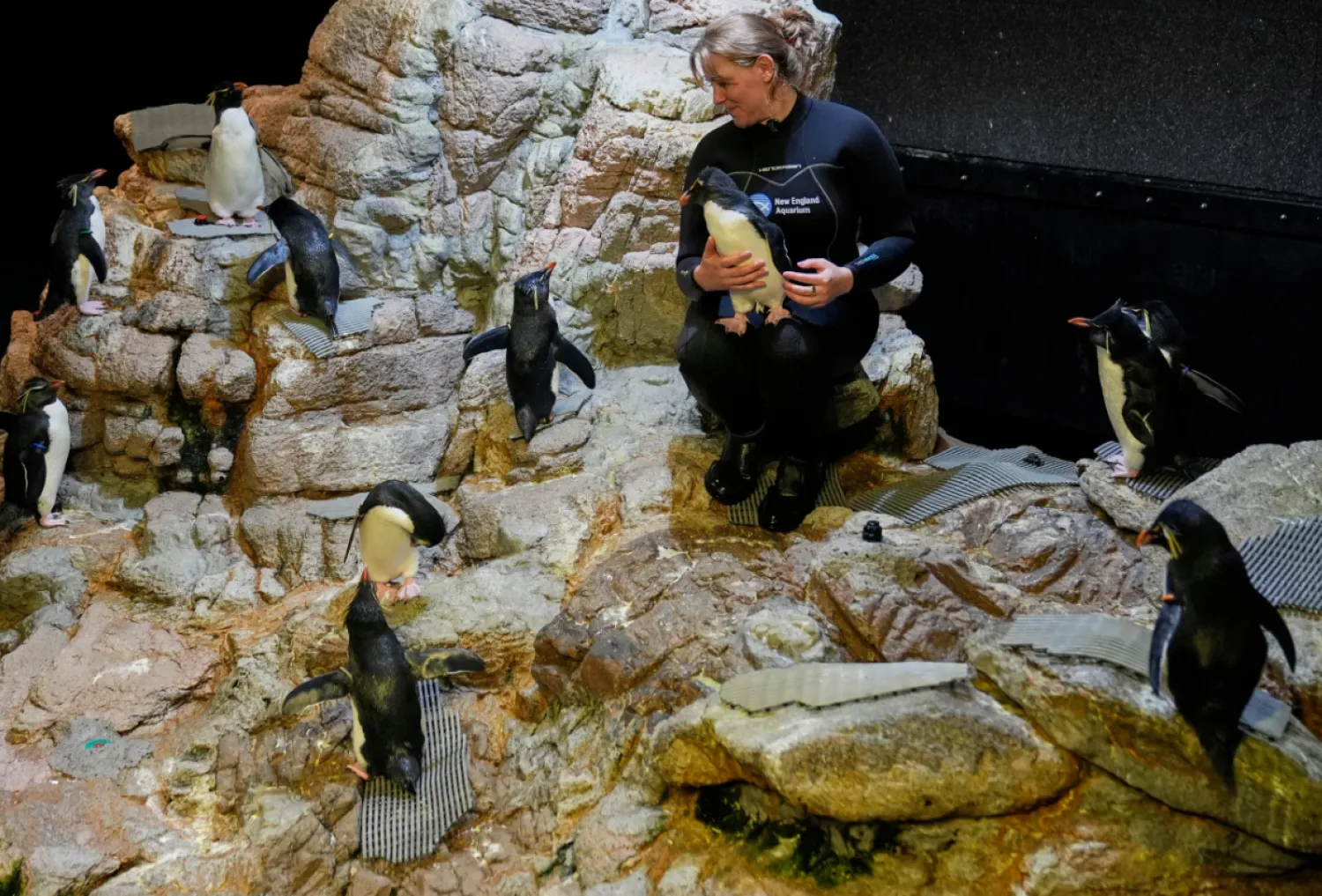When Lambert started losing his vision and slowing down a few steps, it became clear that he needed to be relocated to a place where he could age safely and still be with his friends.
But he couldn't be placed in just any nursing home — because he is a critically endangered African penguin. Instead, the New England Aquarium in Boston, where the 33-year-old Lambert was born and has lived his entire life, decided in February to open a geriatric island for him and its six other aging penguins.
“Honestly, it sort of started off as a joke. It’s like, ‘Oh, well, why don’t we give them an old folks home?’” Eric Fox, associate curator of penguins at the aquarium, said. “But the more we were looking at their welfare data and understanding what ailments they go through, what physical limitations they have, we started to realize that we were on to something.”
The rocky island near the aquarium entrance is set apart from the rest of the 38-bird colony, ensuring the older penguins don't have to compete for territory with their often aggressive, younger peers. These penguins, with their trademark black and white feathers, stand about 2 feet (0.6 meters) tall and weigh about as much as a large house cat, The AP news reported.
The enclosure has some flatter topography and a carpeted path down to the water, which allows Lambert and the other penguins to better navigate up and down the island. The aquarium has built a stand in front of the island, which makes it easier for the penguins to hop out of the water.
As a result, Mia Luzietti, a senior penguin trainer at the aquarium, said she has seen Lambert become more active since moving to the new island — swimming more with his mate and getting off the island more often.
The concept was inspired by a larger concern that is confronting zoos and aquariums around the world — what to do when their animals are surviving far longer than their counterparts in the wild. In the case of these African penguins, some are in their 30s and one lived into its 40s. That is twice as long as they would live in the wilds of South Africa and Namibia, due to threats like pollution and lack of food from humans’ overfishing.
“It's really important that, as we learned how long these animals could live, if given an optimal environment, that we evolved with that,” Luzietti said.
“So learning on an individual level, how can we best set our animals up for success is really what led to the idea of creating our geriatric island, a place where our oldest penguins have a more comfortable, slower way of life as they live out their days here,” she added.
Caring for the aging penguins goes far beyond a safer enclosure.
The older birds get more checkups than their younger counterparts, and veterinarians offer them treatment for ailments that might be familiar to older humans — such as supplements and anti-inflammatory drugs for arthritis and joint pain, and eye drops for glaucoma. There are also more cameras around the island, so staff can better monitor the birds.
“We are just keeping a little closer of an eye on some of these older birds,” Luzietti said. “It’s important that we’re picking up on those — from how someone’s hips are moving, how they’re walking, how they are acting, if someone’s squinting. The smallest change day to day can be hiding a really big secret.”
On a recent day, Luzietti was in the geriatric enclosure tending to Lambert — who seemed content to stand at the top of the island with his mate Dyer III, preening one another and occasionally letting out a loud call that sounded like a donkey's bray. He previously had his left eye removed due to an infection and has glaucoma in his right eye. He also suffers from chronic inflammation.
Luzietti coaxed him down from his perch, and soon he was sitting on her lap, getting ready for his daily dose of eye drops.
A crowd had formed around the enclosure to watch, including Terri Blessman, a 69-year-old tourist from Canton, Illinois, who was being pushed in a wheelchair by her friend Lou Ann Delost. Hearing about Lambert's age and the care he gets, Blessman said she could relate.
“That's wonderful,” Blessman said. “All of us older people need extra care as we get older.”









